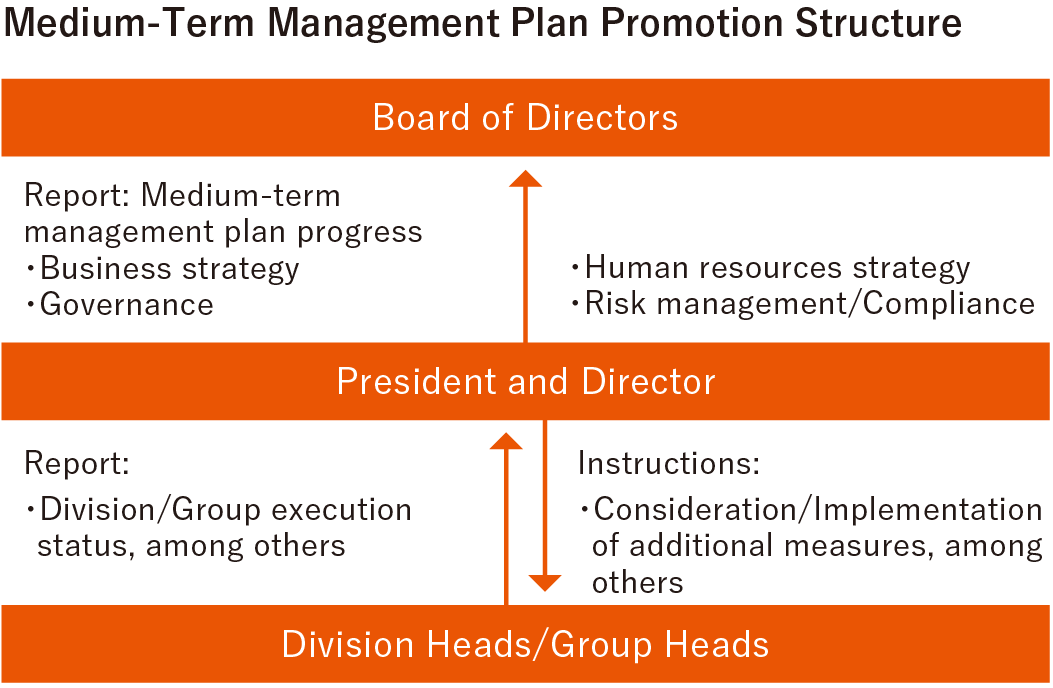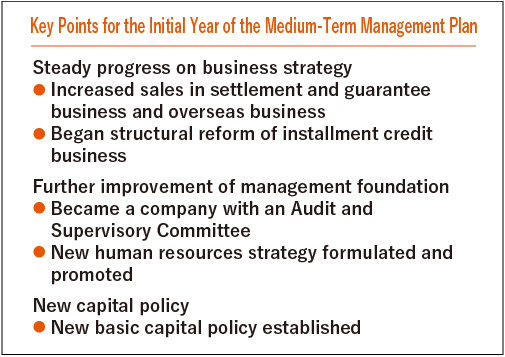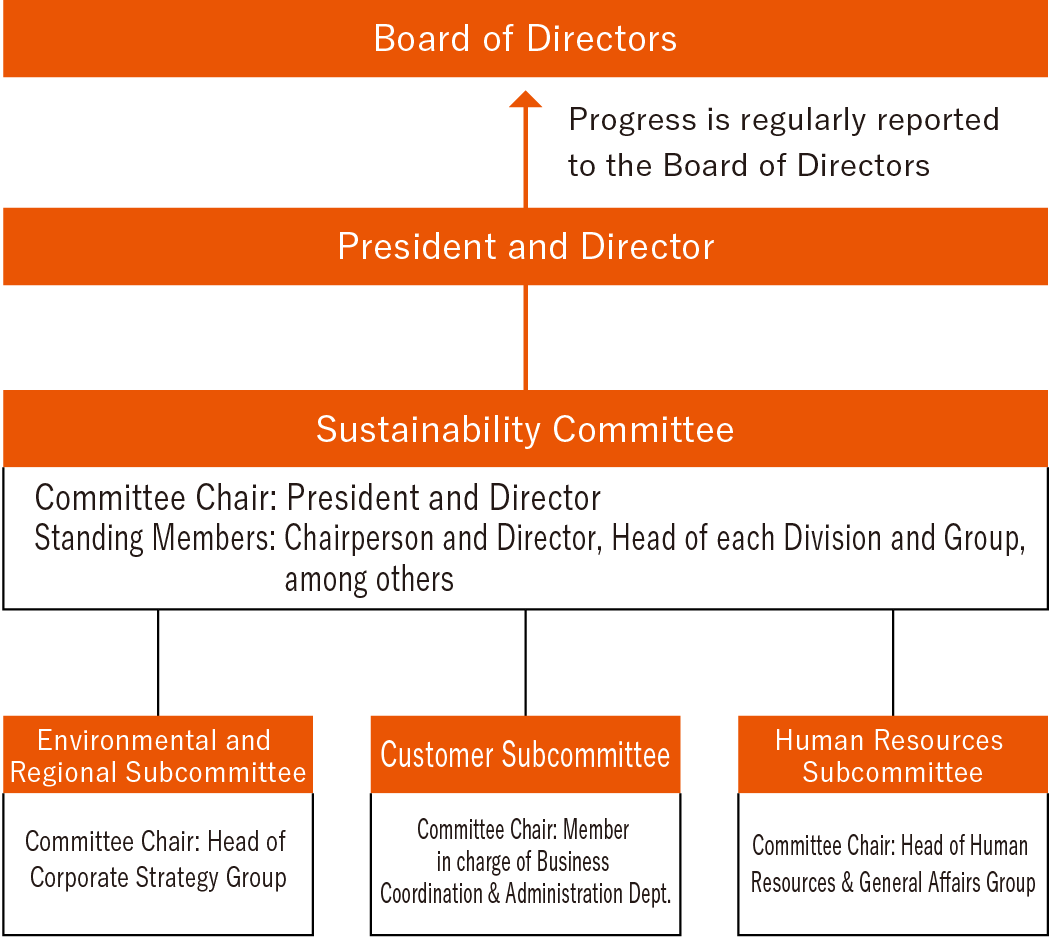Investor Relations(IR)
Integrated Report
Orico's Growth StrategyFrom a Management Perspective Message from Head of Corporate Strategy Group

Sustainability as the Axis of Management
The Key to Transformation is to Create a Group of Talent Who
Autonomously Take up the Challenge of a Discontinuous Future
Shinya Uda
Managing Executive Officer
Head of Corporate Strategy Group
Medium-Term Management Plan Creation Process
The three-year medium-term management plan, starting from fiscal year 2022, was formulated over approximately one year through repeated discussions with board members, including External Directors. We knew we were at a tipping point when we developed the plan. Rather than designing future strategies as an extension of the past, we created a vision of the Company 10 years from now. In addition to looking at the past, we looked at megatrends and environmental assumptions for the future, recognized our current strengths and weaknesses, and organized what we must not change and what we must change. Based on this, we chose a path to transform from a traditional business model by backcasting from our vision for 2030. Our Company is a leading credit company that boasts an approximately 70-year history. However, considering changes in the environment and the growth of the markets where we are mainly engaged, we believe that relying solely on continuity will not lead to growth sufficient for maintaining our position 10 years from now. We used this healthy sense of crisis to envision the future we desire while remaining conscious of undergoing discontinuous changes. Our vision of the Company in 2030 consists of two aspects: an innovative and leading company while contributing to solving various social issues, and a company that is more than ever recognized by its stakeholders for its significance in society. In terms of specific medium-term management plan measures, we linked this vision with sustainability management and established six materialities (important issues), associating them with all strategies that need to be resolved. The current medium-term management plan, which is for the first three years of our journey in which we aim for our 2030 visions for our society and of the Company, is focusing on "Transformation to a New Business Model". The global sense of crisis concerning climate change and the spread of digitization will continue to accelerate as always. In this context, Japan's unique low-interest-rate environment may also change significantly. We believe that it is essential to establish a robust revenue base that allows sustainable growth in such changing environments by leveraging the strengths of the credit model while transitioning to a new business model.
Medium-Term Management Plan: Key Strategies and Progress


The medium-term management plan is organized into three sections: business strategies, management foundation, and financial discipline and capital policy. In our medium-term management plan, we have set the following business strategies: 1) Cultivating priority markets and exploring new business fields, 2) Establishing market-in type of sales, 3) Creation of new services through collaboration with other industries and leading-edge companies, and 4) Delving into process innovation. As of the conclusion of the first year, our business strategies are making steady progress, with key overseas markets seeing increased revenue and the settlement and guarantee businesses expanding their shares. Regarding the management foundation, we became a company with an Audit and Supervisory Committee in June 2022 and made firm improvements, such as accelerating management and strengthening supervision, as well as reinvigorating discussions from a long-term perspective at Board meetings. In the area of talent, another pillar of our management foundation, we formulated a new human resources strategy and implemented concrete measures to create a diverse workforce, such as nurturing DX-promoting human resources, facilitating side jobs at startups, and recruiting external and overseas trainees, providing many employees with opportunities for autonomous learning. Still, given the significant environmental changes, our performance fell short of plans, and the immediate task is recognized as the reform of the revenue structure of the installment credit business, heavily affected by rising interest rates. By managing the entire business portfolio based on risk-return and cost-return to accelerate structural reforms, we will continue our utmost efforts to shift to a business model that can achieve sustainable growth even amid environmental changes.
Sustainability Governance

In this medium-term management plan, we have defined sustainability as the balance between social value and corporate value, and we are placing sustainability at the heart of management, not only in some departments, but also in each and every employee to solve social issues through their work. In April 2022, we established a Sustainability Committee chaired by the President and Director and comprising all division and group heads as members, with meetings held at least four times a year. Beneath the Sustainability Committee, there are three subcommittees related to six areas of materiality: "Environmental and Regional", "Customer", and “Human Resources”. Each subcommittee serves as a cross-functional platform where division heads convene monthly to engage in multifaceted discussions. For example, in the Environmental and Regional Subcommittee, which I preside over, we deliberate on matters such as forming the "Orico Sustainability Fund", collaborating with EV fabless manufacturers, and utilizing vacant houses, all contributing to the creation of new businesses that aid in environmental preservation and community revitalization. Within the Company, there is a widespread understanding that environmental investment is a growth investment rather than a necessary cost, and the search for new business seeds has begun while preparing for risk.
Transforming by Evolving into a Group of Individuals Who Actively Embrace Challenges
In the medium-term management plan, we connect the promotion of SX (Sustainability) through CX (Customers), DX (Digital), and EX (Employees) with "Green", "Digital", and "Open Innovation” serving as a starting point. Digital is not only for improving our Company's operational efficiency and associated cost reductions, but also for promoting the creation of new products and services using digital technology by utilizing open innovation to facilitate new customer experience value. Human resources are the foundation for advancing DX and CX and are most important. Last fiscal year, the Company revised its basic policy on human resources and re-examined its ideals in regard to human resources. One quality we look for is proactiveness, which entails taking initiative and thinking for oneself, rather than relying on others for instructions. We are determined to create a group of talent who autonomously take up the challenge of a discontinuous future. This will make our Company an innovative, leading company that is more than ever recognized by its stakeholders for its significance in society.